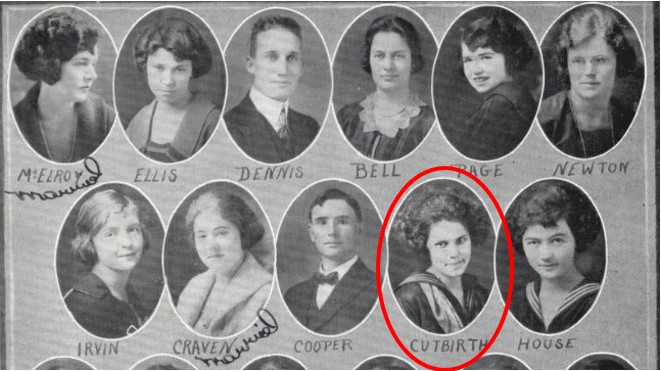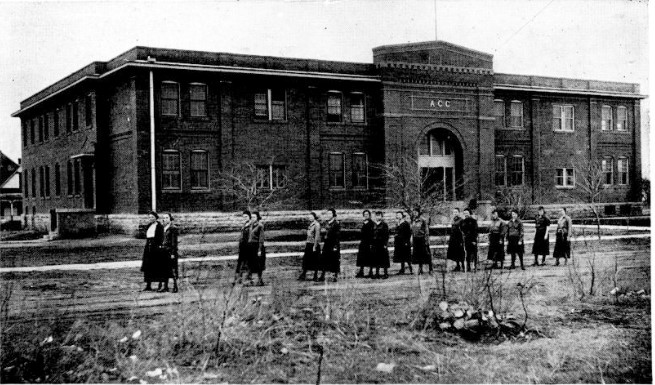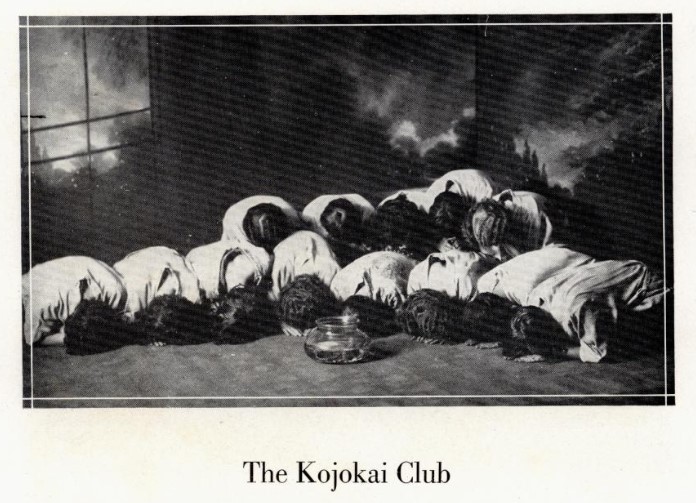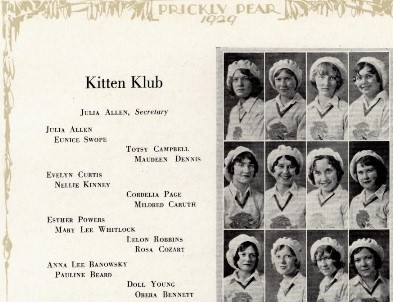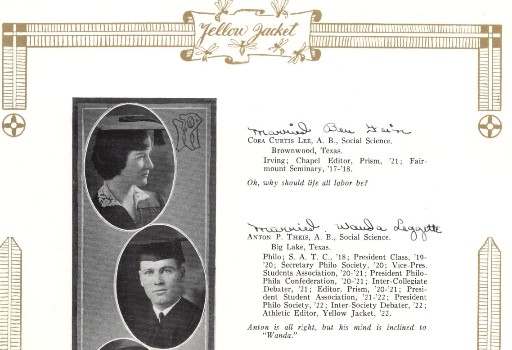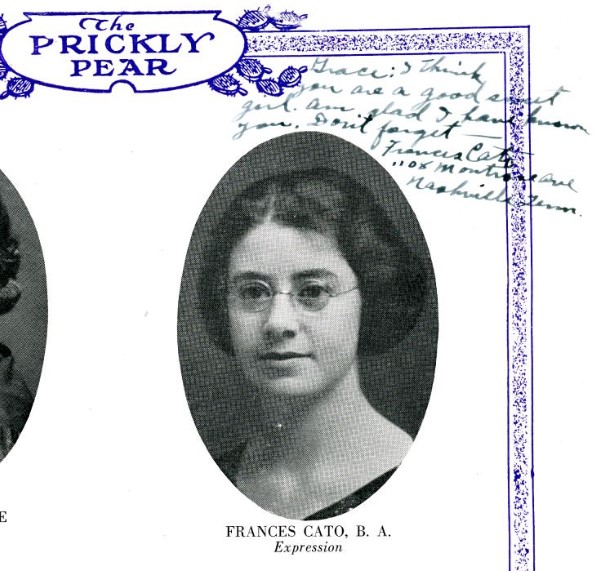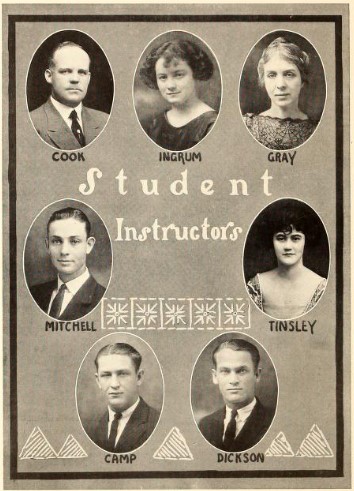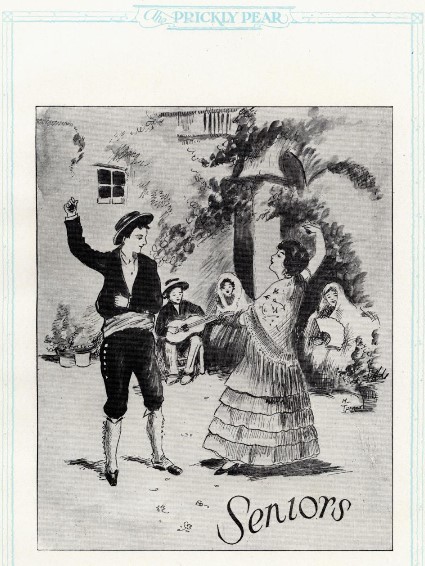Finding my maternal grandmother in a Texas Baptist college 1922 yearbook was an enlightening experience. I had never known my grandmother, Eva Cutbirth; a rodeo queen, skilled marks-woman, and Texas cattle rancher. She died in 1936 after her appendix ruptured, suffering peritonitis; medical training was not as advanced then. My mother, her only child, was six and was raised by her aunts, living close to her father. While Eva’s story was shortened by her death, newspaper articles, family photos and other memorabilia helped shape her story.
The yearbooks I found for Eva’s college years instilled a yearning to understand the experiences of 1920s Texas women, especially those who were able to attend college. My Masters dissertation delved into the experiences of these women, particularly about 500 who attended three Texas religious colleges between 1920-1929. What I learned was eye-opening, not only for the historical context of that period in Texas, but also for the women themselves. I studied 41 of these women extensively, gathering genealogical and historical information about their lives. Workshops are being scheduled later this year to provide details on how to use digitized yearbooks to find information about your ancestors and combining this information with historical context to develop their story. Check the images below this blog to see samples of life in the 1920s.
Amazingly, there are numerous institutions which hold these yearbooks, in partnership with local consortia, universities and others, as noted below. One of the key resources I used to begin the quest for yearbooks was Ancestor Hunt’s yearbook webpage, https://theancestorhunt.com/yearbooks.html. This website has links to freely available, online educational institutions’ yearbooks (high schools, junior colleges and colleges), listed alphabetically for the United States (all fifty states and the District of Columbia) and Canada (all ten provinces). A location (either derived through Census records for the period or other residence lists (city directories, tax records, voting records or other sources)) would be necessary for a genealogist to use in investigating these historical yearbooks. Some yearbooks are available on subscription services (for a fee) but so many are not. The disadvantage of using Ancestry for example, is the limitation to a page for the ancestor, while the complete digitized yearbooks can be read beginning to end.
- American Overseas Schools Historical Society (AOSHS). Yearbooks. https://aoshs.org/collections/yearbooks/ : accessed 29 January 2022.
- Internet Archive. Yearbooks. https://archive.org/details/yearbooks : accessed 1 September 2021.
- Internet Archive. American Libraries. https://archive.org/details/americana : accessed 1 September 2021.
- Internet Archive. European Libraries. https://archive.org/details/europeanlibraries : accessed 1 September 2021.
- The Portal to Texas History. https://texashistory.unt.edu/ : accessed 1 September 2021. This is only one of many institutions one can use to find yearbooks, extremely useful for my Texas research. Check Ancestor Hunt’s yearbook page above OR contact me to assist in locating ones in other states.
Genealogical gems might include handwritten notes, hometowns not previously known, pre-college attendance at other institutions, military service, organizations and sports involvement plus much more. While the snapshots provided a glimpse into the ancestors’ years during these formative years, the yearbooks also provided an undercurrent of political and social norms, some which would be entirely offensive today.
Discriminatory content reflecting racial, gender and eugenics themes exist in these historical publications. While Grover (2019)[i] and Batchelor (2020)[ii] highlighted the importance of yearbooks as “time capsules” reflecting the historical context in earlier eras, they agreed that today’s evaluation of this content is offensive and not in alignment with current laws. Poulson et al. (2020)[iii] shared images depicting a period of social history, a snapshot into acceptable norms of that time. The journal offered a disclaimer stating transparency of the historical aspect was critical, in their view. The authors, though sharing the offensive material, offered an excellent reflection; school students and probably at least a faculty adviser must have felt these images were suitable for inclusion in their yearbooks, reflecting the social norms of the day. Kyvig et al. (2019)[iv] offered a less controversial view in researching historical photographs and visual documents; evidentiary as artifacts and records of information which relate to the story being conveyed, completing the picture of that history.
References:
[i] Grover, M. (2019). The first amendment and the great college yearbook reckoning. University of Richmond Law Review. 53(Online Edition). p. 20. https://heinonline-org.proxy.lib.strath.ac.uk/HOL/P?h=hein.journals/urich53&i=1557 : accessed 20 October 2021.
[ii] Batchelor, O. (2020) Navigating the campus past: college yearbook controversies. Reference Services Review. 48(1). pp. 5-14. https://doi.org/10.1108/RSR-09-2019-0059 : accessed 19 October 2021.
[iii] Poulson, Stephen C., McGee, Hailey S., Wolfe, Tyler J. (2020) Racism on Campus: Yearbook Pictures From Prominent Virginia Colleges (1890-1930). Contexts. 19(4). pp. 56-61. https://journals-sagepub-com.proxy.lib.strath.ac.uk/doi/full/10.1177/1536504220977937 : accessed 12 December 2021.
[iv] Kyvig, David E., Marty, Myron A., and Cebula, Larry. (2019) Nearby History: exploring the past around you. 4th ed. Lanham, Maryland: Rowfield and Littlefield Publishing Group, Inc. pp. 117-118.
The colleges I studied were:
- Abilene Christian College (ACC),[i] Church of Christ affiliation, in Abilene, Taylor County, a four-year college as of 1919[ii] with 1920 city population of 10,274[iii], decade of yearbooks[iv]
- Howard Payne College (HPC),[v] Baptist affiliation, in Brownwood, Brown County, founded in June 1889[vi] with 1920 city population of 8,223[vii], decade of yearbooks[viii]
- Southwestern University (SU),[ix] Methodist affiliation, in Georgetown, Williamson County, chartered in 1875[x], with 1920 city population of 2,871[xi], decade of yearbooks[xii]
Additional References:
[i] Abilene Christian College. https://www.acu.edu/ : accessed 5 September 2021.
[ii] Abilene Christian College. Our History. https://www.acu.edu/about/history/ : accessed 20 September 2021.
[iii] Texas Almanac. City Population History from 1850 – 2000, Abilene. https://texasalmanac.com/sites/default/files/images/CityPopHist%20web.pdf : accessed 5 September 2021.
[iv] Portal To Texas History. Search: The Prickly Pear; Decade: 1920-1929; Resource Type: Yearbook. https://texashistory.unt.edu/search/?q=The+Prickly+Pear&t=fulltext&sort=date_a&fq=untl_decade%3A1920-1929&fq=dc_type%3Atext_yearbook : accessed 1 September 2021.
[v] Howard Payne University. https://www.hputx.edu/ : accessed 1 September 2021.
[vi] WOBLOG. Early Texas Colleges. Washington on the Brazos Historical Foundation Blog. [blog]. http://wheretexasbecametexas.org/category/early-texas-colleges/ : accessed 20 September 2021.
[vii] Texas Almanac. City Population History from 1850 – 2000: Brownwood. https://texasalmanac.com/sites/default/files/images/CityPopHist%20web.pdf : accessed 5 September 2021.
[viii] Portal To Texas History. Search: The Lasso; Decade: 1920-1929; Resource Type: Yearbook. https://texashistory.unt.edu/search/?q=The+Lasso&t=fulltext&fq=untl_decade%3A1920-1929&fq=dc_type%3Atext_yearbook&fq=untl_collection%3AHPUY&sort=date_a : accessed 1 September 2021.
[ix] Southwestern University. https://www.southwestern.edu/ : accessed 5 September 2021.
[x] WOBLOG. Early Texas Colleges. Washington on the Brazos Historical Foundation Blog. [blog]. http://wheretexasbecametexas.org/category/early-texas-colleges/ : accessed 20 September 2021.
[xi] Texas Almanac. City Population History from 1850 – 2000: Georgetown. https://texFasalmanac.com/sites/default/files/images/CityPopHist%20web.pdf : accessed 5 September 2021.
[xii] Southwestern University. Yearbooks for Years 1920-1929. Collection: Southwestern University, A. Frank Smith Jr. Library, Special Collections and Archives. https://archive.org/details/southwesternuniversity?and%5B%5D=year%3A%221929%22&and%5B%5D=year%3A%221928%22&and%5B%5D=year%3A%221927%22&and%5B%5D=year%3A%221926%22&and%5B%5D=year%3A%221925%22&and%5B%5D=year%3A%221924%22&and%5B%5D=year%3A%221923%22&and%5B%5D=year%3A%221922%22&and%5B%5D=year%3A%221921%22&and%5B%5D=year%3A%221920%22&sort=date : accessed 1 September 2021.
Featured image, captured from:
Howard Payne College (1922). The Lasso, Yearbook of Howard Payne College, 1922. Brownwood, Texas: Howard Payne College. p. 39. Collection: Howard Payne University Yearbooks. https://texashistory.unt.edu/ark:/67531/metapth41321/m1/43/ : accessed 1 September 2021.

